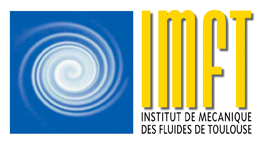Modeling molecular transport in the brain: a coarse-grid multiscale model capturing the microscale dynamics of embedded microvascular networks
David Pastor Alonso
Mardi 14 novembre à 8h45
Amphithéâtre Nougaro
Abstract:
Through nutrient delivery, waste clearance, and adaptation to changes of the metabolic de- mand, the brain microcirculation supports the wide range of tasks performed by neural cells. For that purpose, vascular networks ensure proximity to all cells in the brain through an efficient spatial organization that encompasses a wide range of scales. Such networks include capillaries, i.e., the smallest vessels (1-10 µm in diameter), which are fed and drained by the arterial and venular trees (10-100 µm and over in diameter), respectively. Due to its critical role in brain homeostasis, the cerebral microvascular system is intricately linked to various pathologies, spanning from stroke to neurodegenerative diseases. In some cases, microvascular dysfunction is even the primary cause.
In recent decades, a multitude of advanced imaging techniques have surfaced that enable accurate depictions of microvascular anatomy in the brain. These techniques also provide valuable data on blood flow dynamics and molecular transport. Theoretical models on the transport of molecules have been developed in parallel to interpret and expand the insights provided by these imaging methods. Such models have shown that fine scale features taking place at the cellular scale, notably large perivascular concentration gradients, significantly impact molecular transport. However, capturing these features using conventional numerical tools proves prohibitively expensive. As a result, their applicability is generally constrained to a mere handful of vessels, which is not enough to examine the non-local properties of microvascular networks that drive molecular transport. Numerous alternative approaches have emerged, including in other fields (e.g. geosciences) to address analogous challenges associated with the underlying mathematical structure of transport processes in embedded networks.
In this thesis, we first review these existing approaches to adapt the most relevant features to our specific problem. In doing so, we develop a multiscale model that optimally tackles the spatial constraints of the molecular transport problem in the brain microcirculation. This results in an operator splitting approach firmly rooted in a sound mathematical foundation based on Green’s third identity. This aids in the precise assessment of the underlying as- sumptions in 2D configurations (Chapter 3). Beyond this theoretical analysis of the modeling assumptions, we perform thorough testing through numerical experimentation, which enables us to evaluate the magnitude of errors introduced by the multiscale model, therefore providing a precise estimation of the model’s accuracy. Subsequently, we extend the multiscale model to 3D configurations enabling the simulation of large microvascular networks, with more than 18000 vessels (Chapter 4).
The multiscale model developed in this thesis allows to increase substantially the scope of molecular transport simulations in the brain microcirculation, simplifying the problem signi- ficantly while preserving a non-linear description of metabolic consumption in neural cells.
This, in turn, will enable future investigations of the non-local properties of the microvascula- ture that were not accessible previously. In particular, coupled to an intravascular transport model that better represents the non-linear binding of oxygen to hemoglobin, it will provide a new research tool to further investigate the emergence of hypoxia in Alzheimer’s disease. It may also provide a basis to account for temporal dynamics, then offering a window into neurovascular coupling. Overall, the multiscale model addresses the bottleneck of spatial constraints posed by the microvasculature, thus bridging the gap between the description of transport at the microscale and at the scale of microvascular networks.
Jury
- Paolo ZUNINO Professeur d’Université Rapporteur
- Jose Maria FULLANA Professeur d’Université – Rapporteur
- Catherine HALL Chargée de Recherche Membre du Jury
- Franck BOYER Directeur de Recherche Membre du Jury
- Franca SCHMID Senior Research Assistant Membre du Jury
- Sylvie LORTHOIS Directrice de Recherche Directrice de thèse
- Yohan DAVIT Chargée de Recherche Co-directeur de thèse
- Michel QUINTARD Directeur de Recherche – Èmerite Invité
